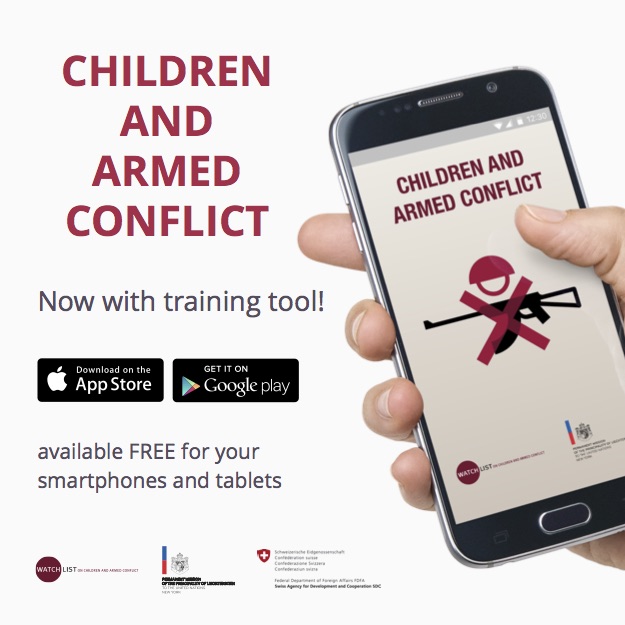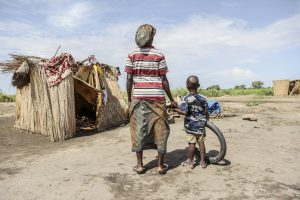Colombia
Advocacy
The Fuerza Armadas Revolucionarias de Colombia- Ejército del Pueblo (FARC-EP) dissident groups and the Ejército de Liberación Nacional (ELN) are listed in the annexes of the Secretary General’s (SG) 2024 annual report (S/2024/384) on children and armed conflict (CAAC) for the recruitment and use of children. In 2023, the UN verified 432 grave violations against 329 children. FARC-EP dissidents recruited 186 children, and ELN recruited 41. Explosive ordnance, targeted killings, combat-related violence, torture, cross-fire and military operations killed and maimed 63 children. FARC-EP dissidents, ELN, Clan del Golfo, Colombian armed forces, and unidentified perpetrators committed 26 cases of rape and other forms of sexual violence and 32 abductions, mostly for recruitment. Armed groups attacked 27 schools and hospitals and blocked humanitarian access 22 times. In December 2024, the UN Verification Mission (S/2024/968) reported an increase in child recruitment, conflict-related sexual violence, and forced displacement, disproportionately affecting Indigenous and Afro-Colombian children. The SG will report on the Verification Mission’s implementation in March. The Security Council should:
- Demand that all parties uphold their obligations under international law, including international humanitarian law (IHL) and human rights law (IHRL), including respecting the principles of distinction, proportionality, and precaution;
- Call on all armed groups to immediately cease the use of explosive ordnance and encourage the government to scale up demining and explosive ordnance risk education;
- Call on all parties to allow and facilitate the safe, timely, and unhindered delivery of humanitarian assistance to affected populations, especially children;
- Demand that all armed groups, in particular the ELN and FARC-EP dissidents, immediately release all children under 18 from their ranks and prevent and end all child recruitment, use, and abductions, as well as take concrete steps to end rape and other forms of sexual violence against children, including in the context of recruitment and use;
- Encourage the Government to continue strengthening efforts to prevent the recruitment and use of children, as well as other grave violations, paying particular attention to the most vulnerable, including girls and indigenous and Afro-Colombian children, and noting vulnerability to recruitment at informal border crossings.
THE UNITED KINGDOM IS THE SECURITY COUNCIL PENHOLDER ON COLOMBIA.
This information is based on Watchlist’s Children and Armed Conflict Monthly Update – March 2025
In February, the SG published his sixth report on the situation of CAAC in Colombia (S/2024/161), covering the period from July 2021 to June 2023. During this period, the CTFMR verified 615 grave violations against 476 children (306 boys, 166 girls, four of unknown sex), representing a substantial increase compared to the previous report (383 grave violations). Indigenous children and children of African descent were disproportionately and increasingly affected by grave violations, representing 43 percent of victims. Girls were also increasingly affected, particularly by recruitment and use and sexual violence, as compared to the previous reporting period. Fuerzas Armadas Revolucionarias de Colombia-Ejército del Pueblo (FARC-EP) dissident groups were the most prominent perpetrator, responsible for 55 percent of verified grave violations, followed by Ejército de Liberación Nacional (107 violations), Clan del Golfo/Autodefensas Gaitanistas de Colombia (52 violations), and the Colombian Armed Forces (27 violations). Recruitment and use of children continued to be the most prominent grave violation, followed by killing and maiming. Rape and other forms of sexual violence, abductions, and attacks on schools and hospitals all increased compared to the previous report. Children were killed and maimed primarily through gunshots, followed by mines, improvised explosive devices (IEDs), and unexploded ordnance (UXO). The Working Group should:
- Demand that all armed groups immediately release all children under 18 from their ranks and prevent and end all child recruitment, use, and abductions, as well as all other grave violations against children; and to engage with the UN to develop action plans to end and prevent grave violations against children;
- Encourage the Government to continue strengthening efforts to prevent the recruitment and use of children, as well as other grave violations, paying particular attention to the heightened risks of grave violations for refugee and migrant children, unaccompanied and separated children, girls, and indigenous and Afro-Colombian children;
- Welcome the Government’s suspension of airstrikes against armed group camps where children might be present and encourage the scaling up of demining and explosive ordnance risk education; and demand that all parties uphold their obligations under IHL and IHRL, including respecting the principles of distinction, proportionality, and precaution;
- Demand that all parties take concrete steps to end rape and other forms of sexual violence against children, including in the context of recruitment and use; and call on the Government to ensure all children have access to gender-sensitive, age-appropriate, disability-inclusive comprehensive and non-discriminatory child protection services, including specialized services for child survivors of gender-based violence;
- Expressing grave concern at the six-fold increase of attacks on schools and hospitals during the reporting period, call on all parties to cease attacks and threats of attack on schools, hospitals, and education and health care personnel, as well as to refrain from the military use of schools and educational facilities; and welcome the Government’s plan of action for the implementation of the Safe Schools Declaration;
- Call on the Government and parties supporting peace dialogues to incorporate child protection issues into all ongoing and future efforts to build and sustain peace, including those with the ELN, AGC, and FARC-EP dissident groups, pursuant to SCR 2427 (2018), drawing on the Practice Guidance for Mediators.
This information is based on Watchlist’s Children and Armed Conflict Monthly Update – April 2024.
Partnerships
Since 2003, Watchlist has partnered with the Coalition against the Involvement of Boys, Girls, and Youth in the Armed Conflict in Colombia (COALICO), including through joint advocacy, trainings, and support for COALICO’s work on monitoring and reporting on child rights violations. A national civil society platform established in 1999 to promote and protect the rights of boys and girls affected by the armed conflict, COALICO coordinates the Observatory on Children and Armed Conflict that monitors and reports on grave violations against children in Colombia. It also participates as a permanent member of the UN-led Country Task Force on Monitoring and Reporting (CTFMR).
Publications
Perpetrators listed in the annexes of the Secretary-General’s annual reports on children and armed conflict
| 2001 | 2002 | 2003 | 2005 | 2006 | 2007 | 2009 | 2010 | 2011 | 2012 | 2013 | 2014 | 2015 | 2016 | 2017 | |
|---|---|---|---|---|---|---|---|---|---|---|---|---|---|---|---|
| Autodefensas Unidas de Colombia (AUC) | a | a | |||||||||||||
| Autodefensas Unidas del Sur del Casanare (AUSC) | a | a | a | a | |||||||||||
| Autodefensas Campesinas de Cordoba y Uraba (ACCU) | a | a | |||||||||||||
| Autodefensas de Magdalena Medio (ACMM) | a | a | |||||||||||||
| Autodefensas del Meta (AM) | a | a | |||||||||||||
| Autodefensas Campesinas del Sur del Cesar (ACSC) | a | ||||||||||||||
| Autodefensas del Puerto Boyaca (APB) | a | ||||||||||||||
| Autodefensas de Cundinamarca (AC) | a | ||||||||||||||
| Autodefensas Unidas de Colombia – Bloque Centauros | a | ||||||||||||||
| Autodefensas Unidas de Colombia – Bloque Norte | a | ||||||||||||||
| Autodefensas Unidas de Colombia – Bloque Mineros | a | ||||||||||||||
| Autodefensas Unidas de Colombia – Bloque Pacifico | a | ||||||||||||||
| Fuerzas Armadas Revolucionarias de Colombia (FARC) | a | a | |||||||||||||
| Fuerzas Armadas Revolucionarias de Colombia-Ejército del Pueblo (FARC-EP)* | a,c,e | a,b,c,e,f | a,b,c,d,e | a | a | a | a | a | a | a | a | ||||
| Ejército de Liberación Nacional (ELN)* | a | a | a,c,e | a,b,c,e,f | a,b,c,d | a | a | a | a | a | a | a | a | ||
| Frente Cacique Pipinta | a,b,c,e | a |
a: Parties that recruit and use children
b: Parties that kill and maim children
c: Parties that commit rape and other forms of sexual violence against children
d: Parties that engage in attacks on schools and/or hospitals
e: Parties that engage in abduction of children
f: Parties that deny humanitarian access to children
~ This party has concluded an action plan with the United Nations in line with Security Council resolutions 1539 (2004) and 1612 (2005).
* This party has been in the annexes for at least five years and is therefore considered a persistent perpetrator.




